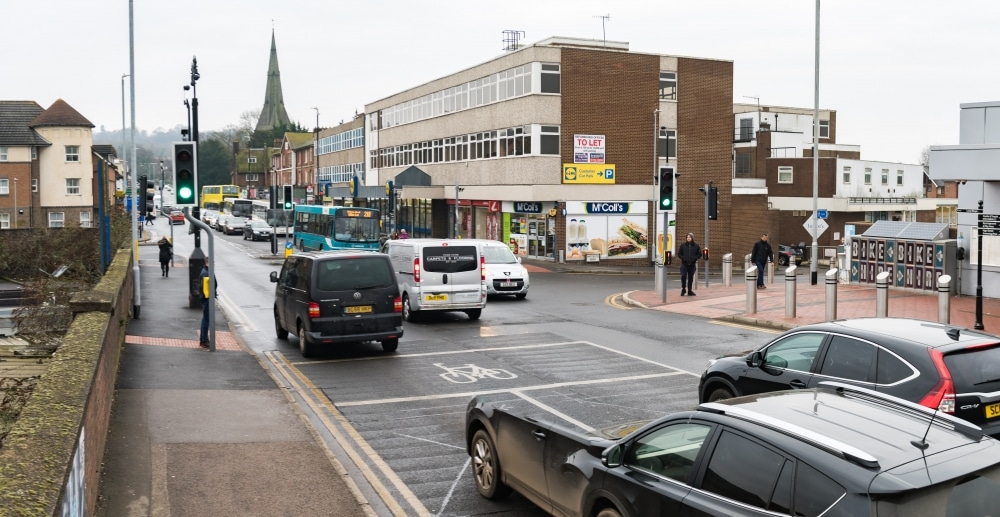Half a million pounds was spent on the works, which took six months to complete. But the triple junction has caused confusion among pedestrians and motorists.
The new design was supposed to help manage the flow of traffic, particularly at peak times when students are using the station and adjacent bus stops.
But drivers have complained of congestion backing up to Vale Road and Pembury Road.
And Kent County Council [KCC] Highways felt compelled to issue a warning about the conduct of schoolchildren using the crossings.
Tim Middleton, KCC’s Principal Transport Planner explained: “Part of the issue we are finding is the junction becomes blocked by vehicles who are entering when their exit is not yet clear.”
“The lights then change and drivers become ‘stranded’ in the junction. This causes a change to the timings as the sensors pick up on the vehicles and then give extra time for the junction to clear before allowing pedestrians to cross.
‘It appears that no vehicle or pedestrian is allowed to proceed – the lights remain on red longer than they would have done’
“This means that at some points it will appear that no vehicle or pedestrian is allowed to proceed and the lights remain on red longer than they would have done.”
Yellow box markings have been painted on the road to stop drivers entering the junction when their progress is blocked.
The state-of-the-art traffic signals are designed to adjust their timings depending on traffic and pedestrians flows.
Another problem has been that the ‘green man’ displays are situated at elbow height on the near side of the crossings, meaning that pedestrians cannot see them if someone stands in front of them.
“It is clear that most pedestrians are expecting to see the displays up high and naturally look to the far side of the road, as they would on a pelican crossing,” said Mr Middleton.
“Puffin crossings, as the Tonbridge signals are, are becoming the new standard across the country as they can react to real world situations to alter the timings.
“On puffin crossings the display units must be located on the near side. This is so that when the ‘green man’ is shown the waiting pedestrians cross the road and anyone behind them who arrives late would be discouraged from crossing.
“The sensors mounted on the poles will monitor the pedestrians who are crossing and give them more or less time to cross depending on how much time the pedestrian needs. For example, older people who may walk more slowly will be given longer to cross.
Extra pedestrian displays have now been installed higher up on the poles but they are still placed on the near sides
“If an additional person joins the crossing late the system will delay the traffic as long as it can. To prevent this from happening, the ‘green man’ disappears relatively quickly compared to a pelican crossing, which is set on a timer.”
Extra pedestrian displays have now been installed higher up on the poles but they are still placed on the near sides.
Another display pole has been added on the corner of Waterloo Road near to the newsagents because pedestrians heading towards the station are ‘naturally stepping beyond the display unit and are then unable to see if their green man has been shown,’ said Mr Middleton.
He said that audible signals to the puffin crossing might be included as a further safety measure in response to public concerns.
The Infamous High Street Bus Stop G
Michael Payne, KCC Deputy Cabinet Member for Planning, Highways, Transport and Waste, has confirmed there were plans to improve the traffic flow on the northbound carriageway of the High Street.
Bus stop G, outside Caffe Nero, has been a consistent cause of complaint since the main thoroughfare was altered three years ago because it blocks traffic while loading laybys are sited either side of it.
Cllr Payne said that during the summer the carriageway would be widened and a layby installed for buses to allow vehicles to pass.
He also confirmed that Southeastern had committed to providing a cycle hub in Barden Road.








